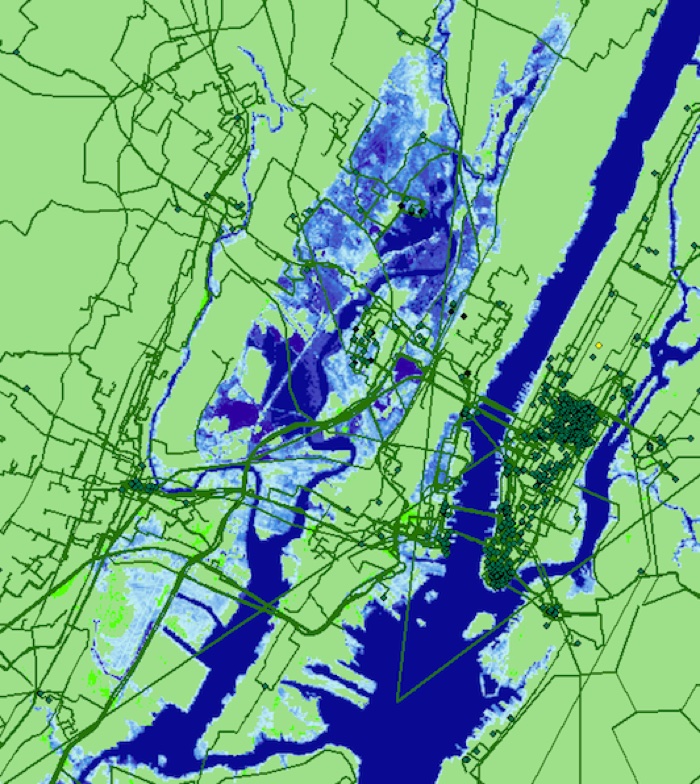We only have fifteen years. That's how long experts say it will be before thousands of miles of American internet cables will be submerged by rising seas.
A new analysis has overlaid sea level incursion projections on top of maps of critical internet infrastructure in the US, to discover that 'locked in' climate change by 2033 will submerge some 4,000 miles (6,400 kilometres) of fibre cables: wires buried in the ground decades ago, and never designed to operate underwater.
"Most of the damage that's going to be done in the next 100 years will be done sooner than later," says computer scientist Paul Barford from the University of Wisconsin-Madison.
"That surprised us. The expectation was that we'd have 50 years to plan for it. We don't have 50 years."
Of course, the vast majority of internet cables that deliver your daily data fix are already underwater, criss-crossing the ocean floor in a vast global network spanning some 885,000 km (550,000 miles) of submarine bandwidth.
The thing is, those undersea cables were specifically built to be water-proof. When those submarine cables reach coastal cities, though, the physical cabling switches from water-proof wires to merely water-resistant ones.
It's a big (and potentially catastrophic) difference.
 New York City's inundated network, circa 2033 (Paul Barford/UWM)
New York City's inundated network, circa 2033 (Paul Barford/UWM)
"When commercialisation of the internet happened, everybody wanted to make money," explains one of the team, Ramakrishnan Durairajan from the University of Oregon.
"Companies started their own infrastructure deployments. Everyone had their own policies and deployed everything that they wanted in ways that were good for them."
In other words, profit-seeking telecommunications corporations laid their own cables and hubs as it suited them, and given this phase happened decades ago – before today's level of awareness of global warming – future-proofing the networks against an unimaginable flooding event was never in the blueprint.
"When it was built 20-25 years ago, no thought was given to climate change," Barford says.
"The landing points are all going to be underwater in a short period of time."
According to the team's analysis, New York, Miami, and Seattle are the most susceptible US cities, but given the way the internet works, the effects won't be contained to just those areas, as any data connections ferried through affected regions could be impacted.
Combine that with the fact that the researchers only considered American infrastructure – and the same issue could be a threat in coastal or low-lying cities in countries across the world – and it's clear we're facing a major problem.
"So much of the infrastructure that's been deployed is right next to the coast," Barford explained to National Geographic, "so it doesn't take much more than a few inches or a foot of sea level rise for it to be underwater."
According to a report by NPR, communications giants like AT&T and Verizon are aware of the issue and are already deploying systems that can survive the rising tide – something that Barford says will have to become the rule in this wetter new world, not the exception.
"The bottom line is that most internet infrastructure that has been deployed did not have to consider climate change effects," Barford told Motherboard.
"Going forward all deployment should consider climate change effects."
The findings were presented this week at IETF 102, a meeting of the Internet Engineering Task Force, held in Montreal this week.
